Pretty Fashions
Bridal Gown Seamstress to the World
Lin Hsin-ching / photos Chuang Kung-ju / tr. by Scott Williams
August 2013
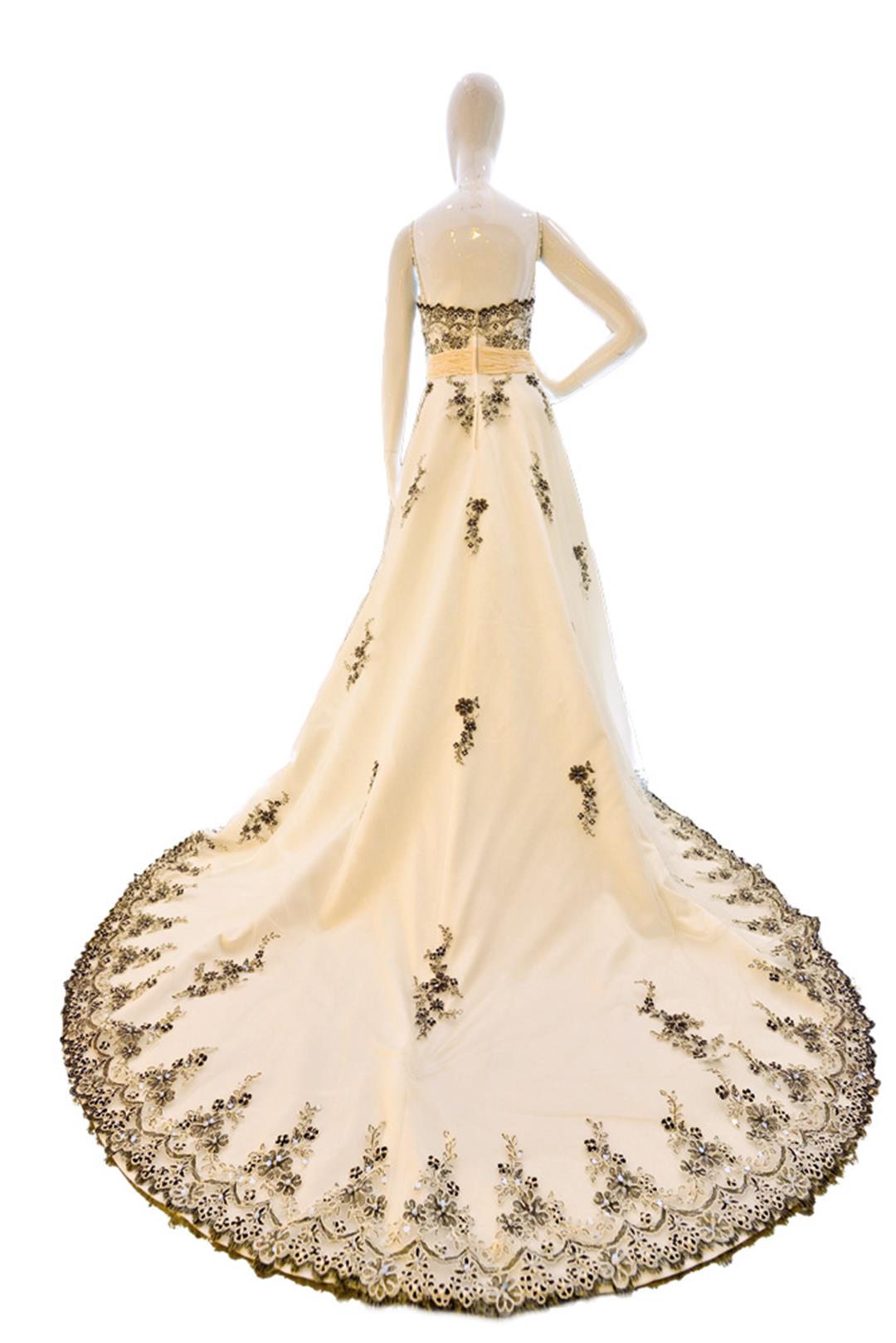
Weddings turn brides into “princesses for a day.” Dressed in elegant, figure-hugging gowns, crowned with diamond-studded tiaras, they become the focus of every guest’s attention. A surprisingly large number of these magical dresses are manufactured by a Taiwanese company called Pretty Fashions.
Founded 24 years ago, Pretty Fashions currently accounts for 16–18% of the global wedding-gown market, the nearly one in five brides who get married in one of its gowns likely having purchased it through a chain such as David’s Bridal in the US or Pronovias in Spain.
Already a global powerhouse, the company began selling to the Taiwanese market two and a half years ago, its exquisite “cheaper to buy than to rent” bridal wear providing local couples with a new choice for their own weddings.
A new bridal-wear shop opened on Taipei’s Zhongshan North Road, the city’s so-called “wedding-gown street,” in late 2010. Known as cuc.Bridals, the shop has been garnering attention for its business model: it sells brand-new dresses for less than it costs to rent them. The approach distinguishes it from the hordes of wedding shops surrounding it, which offer “complete wedding packages” that include rental gowns, makeup, and photographs.
cuc.Bridal frequently piques the curiosity of couples preparing for their trip down the aisle. Popping inside to look it over, they are often surprised to find not just fashionable wedding gowns, but also evening wear and even high-end tailored clothing.
The shop’s gorgeous wedding gowns are on a par with those of celebrated international brands, yet are incredibly reasonably priced, selling for just a few thousand to something over 10,000 NT dollars apiece including alterations. Such prices entice many brides who hadn’t originally planned to buy their wedding gowns to do so.
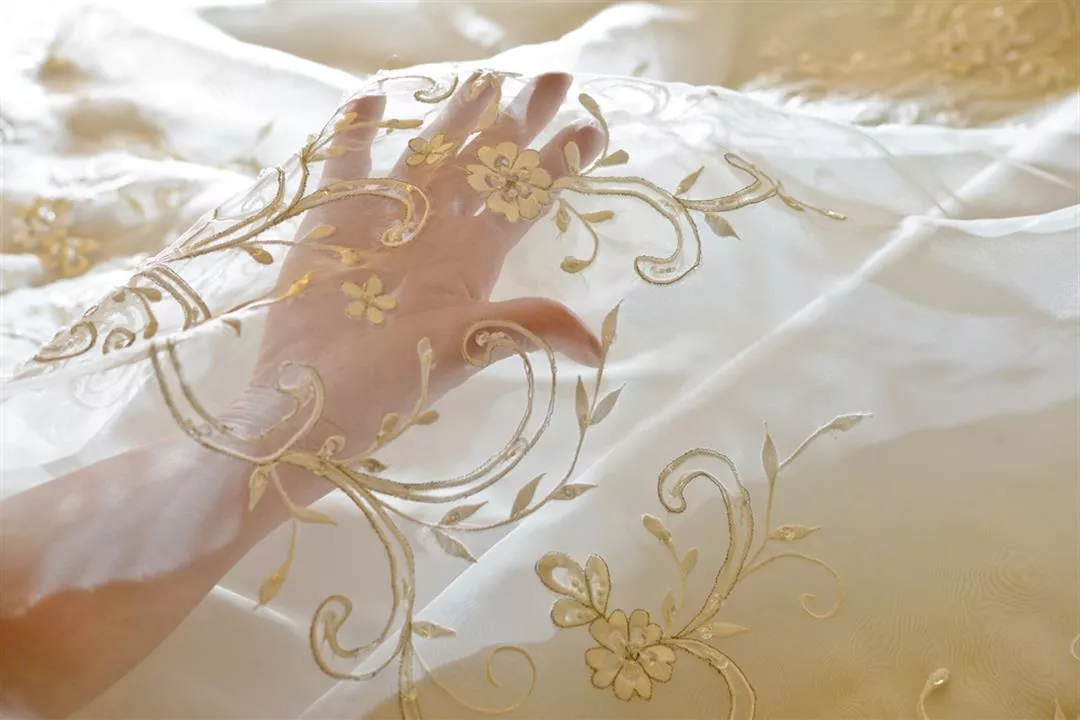
Why are cuc.Bridals’ gowns so inexpensive?
“The gowns were originally samples provided to foreign clients, and are absolutely unique,” says Zhang Yuyun, the company’s chair. “We’ve got them in inventory, so why wouldn’t we offer them to Taiwanese brides?”
It helps that the shop’s parent company is Pretty Fashions, the world’s largest manufacturer of wedding gowns. The company is the “hidden champion” of the bridal-wear industry, producing more than 400,000 wedding dresses every year. It has been particularly successful in Europe, where it has a 25% market share, and has a significant presence in the US market as well.
Zhang’s husband, Andy Huang, has been integral to the company’s success. Simply attired in his usual garb—casual slacks and a polo shirt—the 60-year-old Huang looks far more down to earth than you might expect of a clothing magnate and makes a striking contrast with his wife. He even jokes about his wife’s tendency to dress to the nines, saying that “she owns so many evening gowns she could use them as pajamas.” Nothing about Huang’s own style even hints at his giant-like stature within the bridal-wear industry.
Huang is a classic example of a Taiwanese entrepreneur who has succeeded through hard work. Born into a poor farming family in New Taipei City’s Sanzhi District in 1955, he developed a yearning to travel the world at an early age. “Realistically speaking, the only way I was likely to see the world was as a member of an agricultural mission or by becoming a sailor,” laughs Huang.
He set his sights on studying at China Maritime College (now the Taipei College of Maritime Technology) and went to work in the shipping industry after graduating from the school.

Making a wedding dress is a complicated endeavor involving many steps for which human hands work far better than machines.
During his three years at sea, Huang visited ports all around the Atlantic and Indian Oceans. But he gave up sailing in deference to his mother, who thought it too dangerous a career for her only son.
His feet again on dry ground, Huang supported himself as a hawker, salesman, and even delivery driver before a former classmate helped him get a job with Northwest Airlines’ cargo division.
Upbeat and proactive, Huang was a natural salesperson and quickly built a reputation within the company. He went on to work for Northwest for seven years, rising to the level of sales manager on the strength of his own hard work.
Though Huang had a stable job that was providing him with regular pay increases, he didn’t like the idea of spending his entire life working for “somebody else.” Feeling the call of adventure, he began to look into starting his own business.
“I don’t know how many businesses I invested in,” says Huang, “but every one of them failed. I’d often put several hundred thousand NT dollars into a company, and end up bringing home nothing more than a fax machine when it went under.”
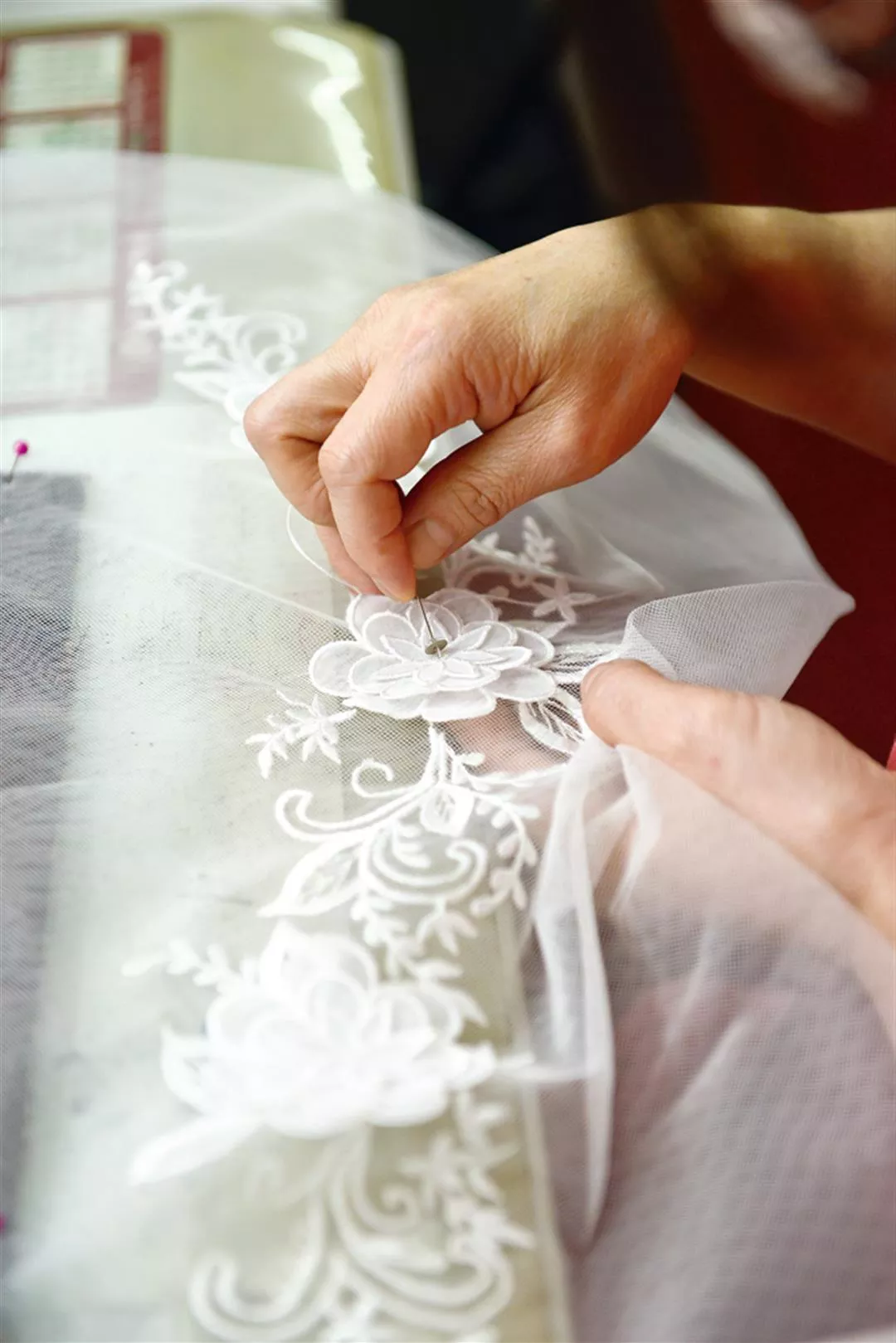
Making a wedding dress is a complicated endeavor involving many steps for which human hands work far better than machines.
Numerous failed businesses and losses running to several million NT dollars did nothing to cool Huang’s entrepreneurial ardor, and he put investment number 12 into wedding gowns.
His seemingly random choice got off to a surprisingly good start. When distributors in the US saw the company’s samples, they immediately ordered 25 gowns. Sensing success drawing nigh, an ecstatic Huang decided that this was the one.
His investment in the business happened to take place just as Taiwan’s wedding photography business was taking off. Jon Shy Bride World was at the forefront of the photographic charge. In those days, Jon Shy also had a factory that it used to make wedding gowns for the Middle Eastern market. But with domestic demand growing rapidly and currency controls making it difficult to collect payment from foreign clients, the company decided to close the factory. Huang leapt at the opportunity, hiring the skilled seamstresses let go by Jon Shy, then founding Pretty Fashions in 1989 to export wedding dresses to the US and Europe.
Huang says that Western societies view marriage as a once-in-a-lifetime event, and are therefore willing to spend big money on unique gowns for them. Bridesmaids, groomsmen, friends and family also need to buy formalwear for the event. As a result, the US and Europe have a very stable wedding-gown industry, one that generates billions of US dollars per year in revenues and is relatively immune to economic cycles.
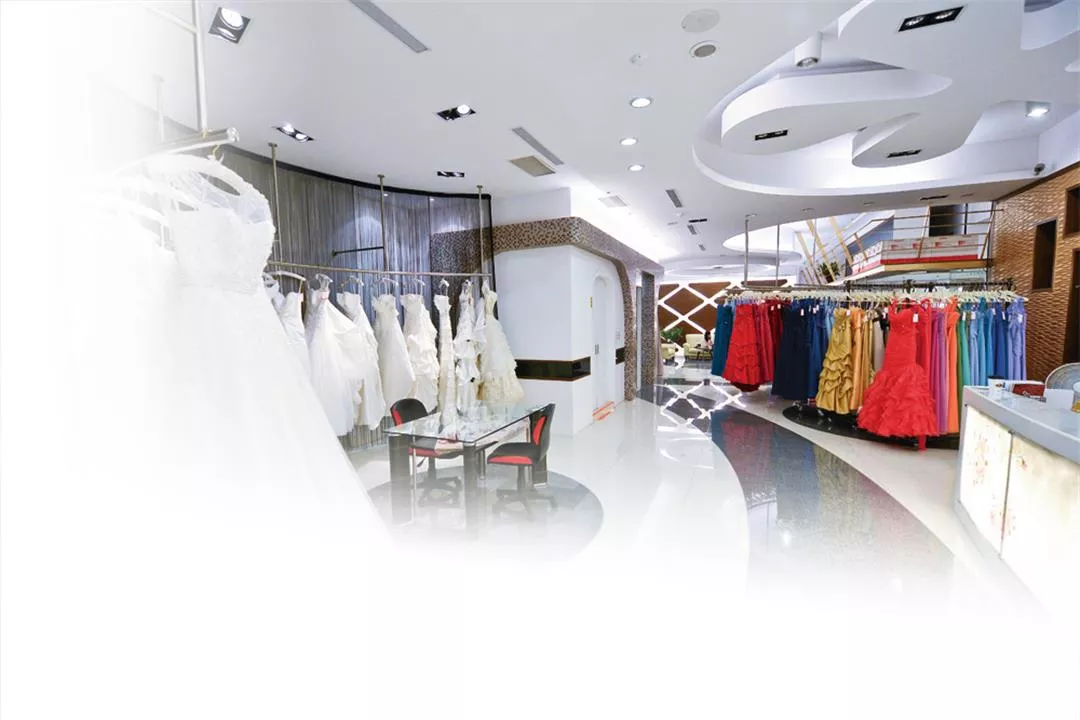
The cuc.Bridals display area is bright and spacious. Filled with gowns of every color and style, it has something for women of all ages.
Taiwanese wedding-gown makers selling to the US and European markets utilize an “original design manufacturing” model, designing gowns, taking orders, and manufacturing product for overseas clients. The Taiwanese ODMs hire their own designers, and have clothing labels and distributors choose from their new designs every quarter. The gowns their clients select are then put into volume production.
Pretty Fashions once had a quarter in which their clients rejected all of the dozens of samples the company sent out because they failed to reflect the ongoing trends in European and American fashion. Concluding that placing the company’s fate in the hands of just a few designers is just too risky, Huang has actively involved himself in the design process ever since.
In the pre-Internet era, he provided his designers with large numbers of foreign wedding-fashion magazines as references. He also had the designers and salespeople work together to brainstorm ideas appropriate to individual markets.
Zhang, an outstanding marketer and salesperson in her own right, notes that tastes vary from region to region in the US. “New York brides are similar to European brides. They like simple and elegant princess-style gowns that highlight their figures. In Texas, Mexican culture influences tastes. Brides there love Latin styles with ornate ruffles on the skirts. In the American West, there are a lot of overseas Chinese and you see a preference for sumptuous ball-gown-style wedding dresses.”
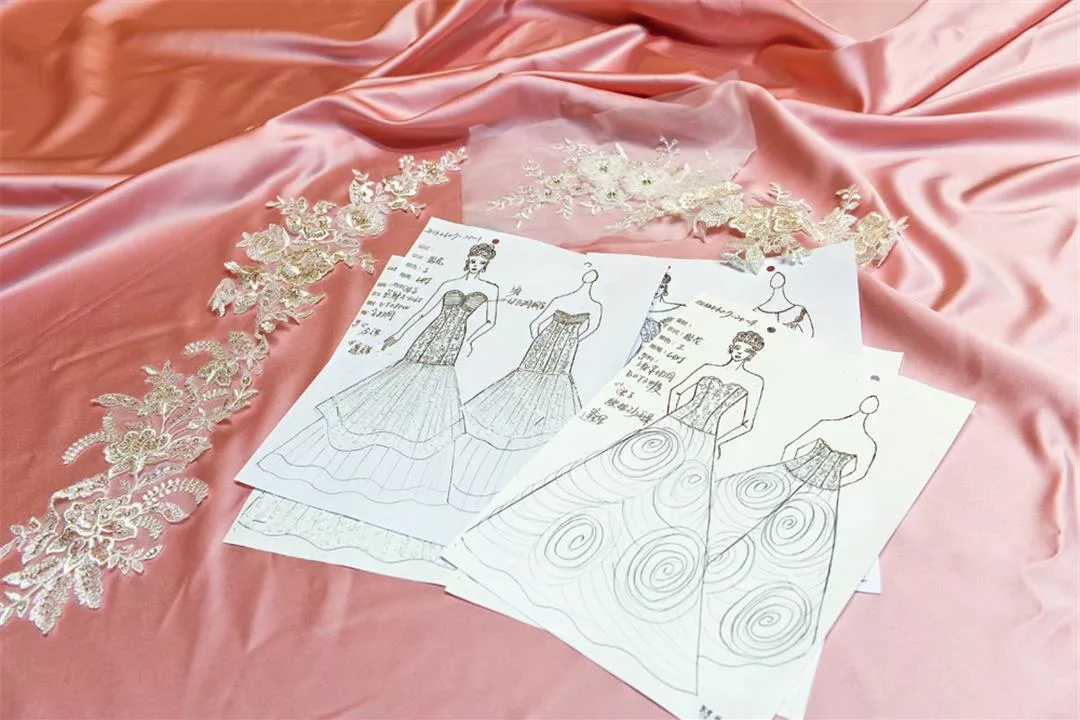
The magic of wedding gowns turns ordinary women into “princesses for a day.”
Adept at recognizing its clients’ needs, Pretty Fashions soon established a solid foothold in the wedding-gown industry and began to grow. But, in the early 1990s, the company began to face stiff competition from mainland China. The mainland’s ODM wedding-gown industry was beginning to take off and its low cost of labor relative to Taiwan eroded the company’s price advantage.
Huang explains that wedding dresses are a very labor-intensive product, commonly decorated with beads, appliqués,
embroidery, and layer upon layer of lace and muslin that need painstaking hand stitching.
With that in mind, Pretty Fashions had little choice but to offshore its own production to reduce its labor costs. Huang established the company’s first overseas factory in Shenzhen in 1994.
In 1999, David’s Bridal, a large wedding-gown chain in the US, approached Pretty Fashions about jointly establishing a factory in Sri Lanka, a low-labor-cost country. Though a number of people urged Huang to think the offer over very carefully, Huang was determined to raise Pretty Fashions’ global profile and deepen its capacity for international cooperation, so he leapt at the opportunity.
As a result, Pretty Fashions now has two factories in Sri Lanka employing some 1,700 people, and is the only company in that nation capable of producing fine wedding gowns.
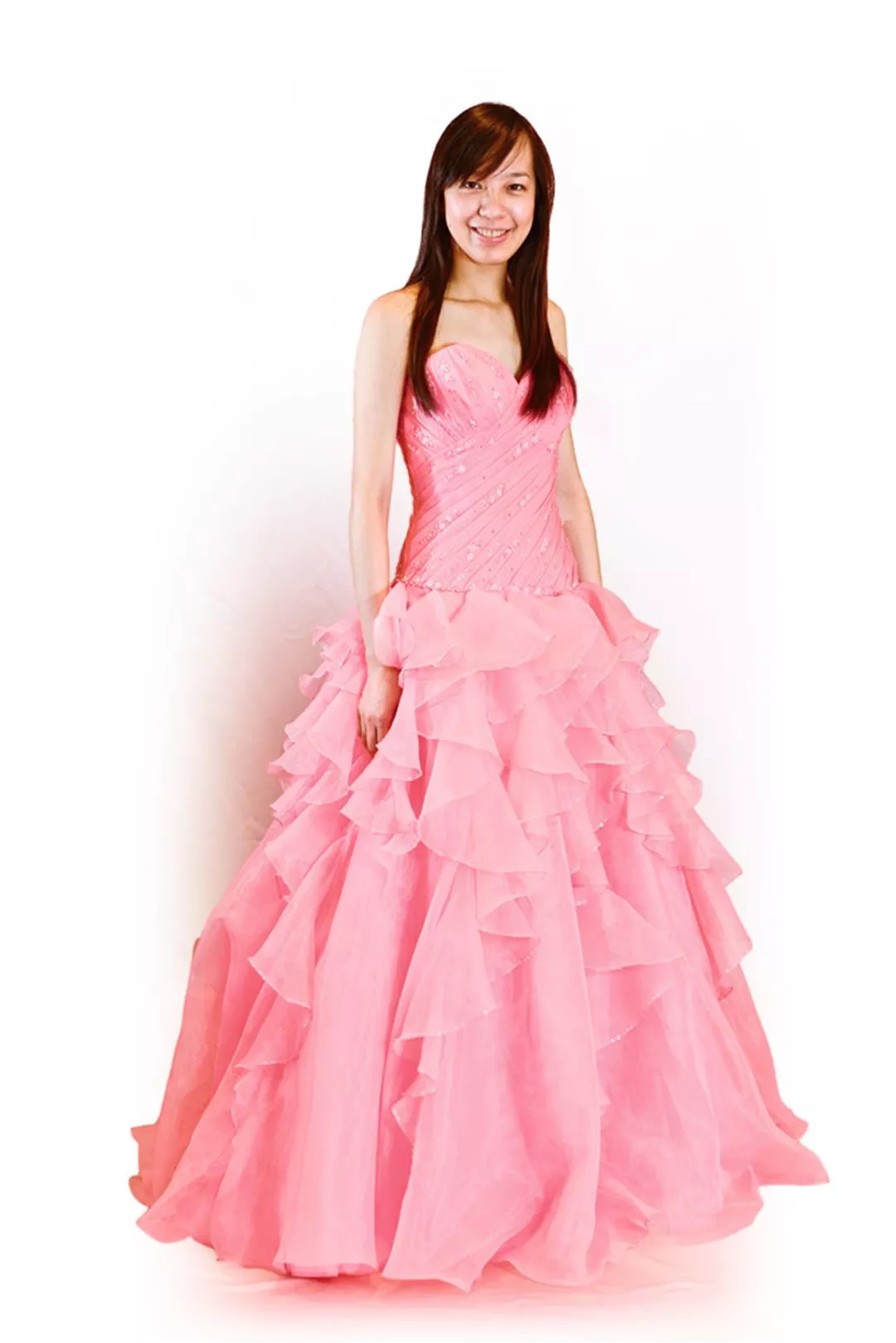
This lovely pink gown would be an excellent choice for a bride-to-be’s engagement party.
Pretty Fashions has been increasing the number of its international clients and strengthening its reputation for the last 20 years and more. Over that period, it has grown from a small, Taiwan-based enterprise into a large business group that manufactures wedding dresses at 10 factories spread across mainland China, Vietnam, and Sri Lanka, and has annual revenues of US$48 million (roughly NT$1.49 billion).
In late 2010, the company turned its gaze to Taiwan with the opening of cuc.Bridal on Taipei’s Zhongshan North Road.
“We’ve been serving brides overseas for years,” says Huang. “As a Taiwanese company, we’d like to give brides here at home the option of purchasing elegant, beautifully designed gowns at bargain prices.”
But Taiwan’s wedding-photo industry remains a powerful rival. Brides typically want to preserve the memory of their weddings with gorgeous photos of themselves in their wedding gowns. Consequently, many opt to purchase package deals covering both gown rentals and photographs, and relatively few choose to buy their own gowns. As a result, cuc.Bridals’ business has been dominated by sales of evening wear driven by word-of-mouth from older women and socialites. In fact, the shop now sells an average of more than 100 such gowns every month.
With cuc.Bridal, Taiwan’s female consumers can transcend the limits of time and space, zipping themselves into the latest American and European gown fashions at the same time as their counterparts on the other side of the world. As Pretty Fashions strides into the future, this locally based, globally active giant of the wedding-gown industry will continue its determined effort to deliver the most ravishing of wedding dresses to brides the world over.
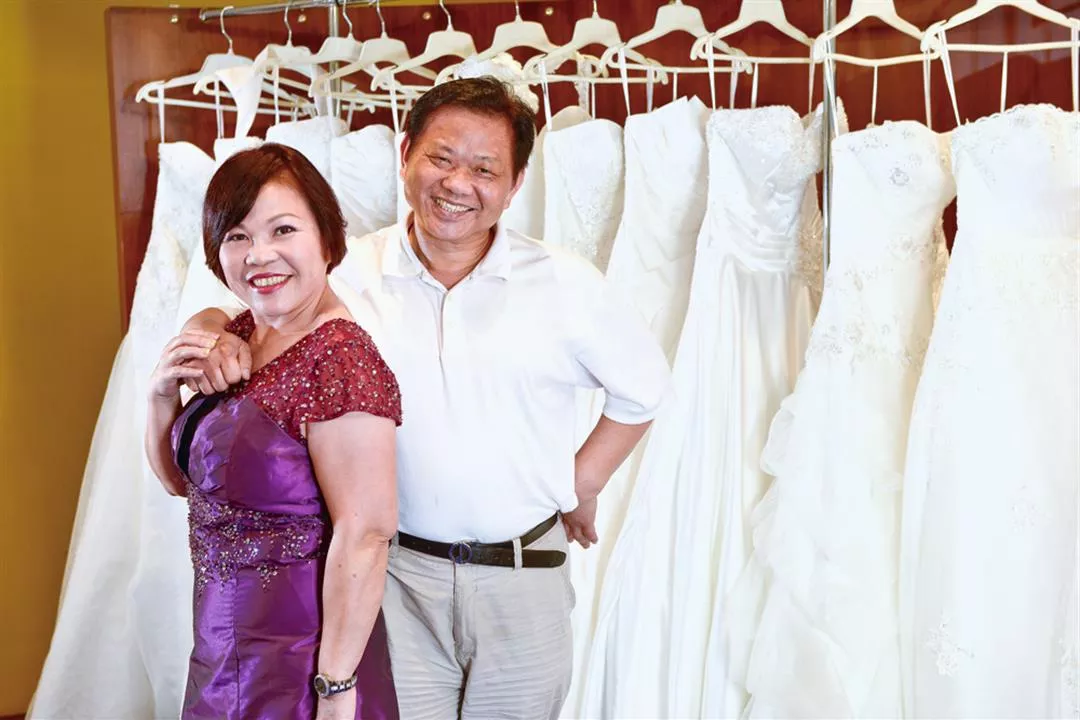
The complementary personalities of husband and wife Andy Huang and Zhang Yuyun have enabled them to forge a wedding-gown powerhouse with global reach.
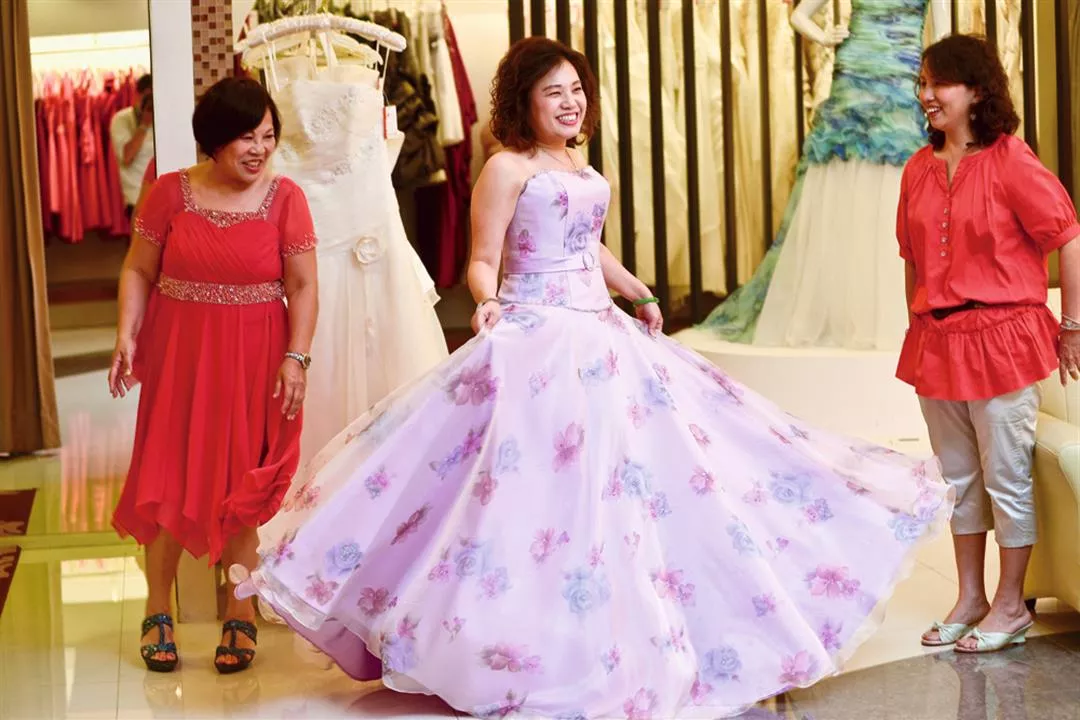
cuc.Bridals’ hottest products are its evening gowns. Their graceful skirts, bright colors, and form-fitting cuts make the wearer feel years younger.







@List.jpg?w=522&h=410&mode=crop&format=webp&quality=80)